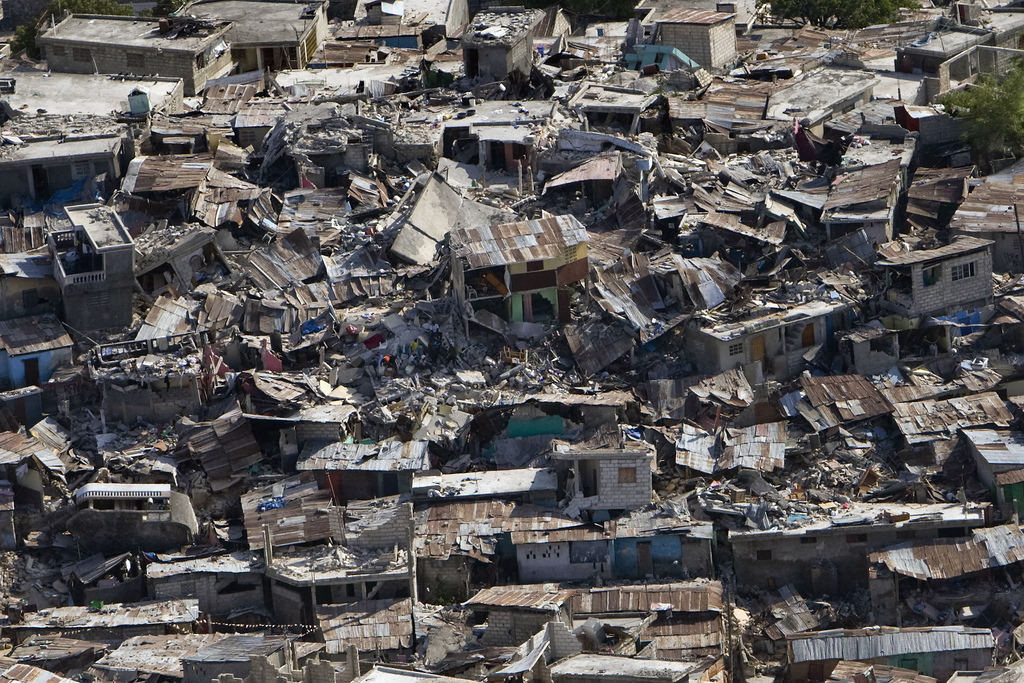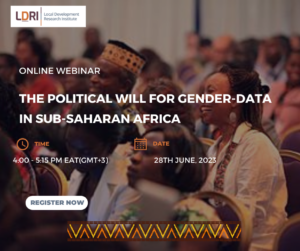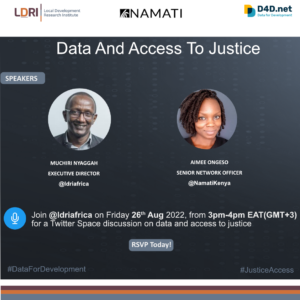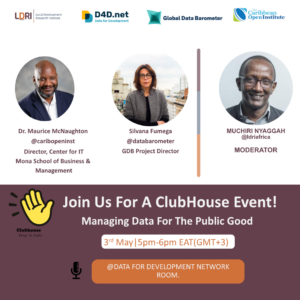![]()
Interdependence: An Imperative Consideration for Better Data Coordination in Resilience Building


“Because everything is interconnected-a massive system of systems-a single disruption often triggers another, which exacerbates the effects of the first, so that the original shock becomes a cascade of crises.”
Judith Rodin, The Resilience Dividend
Over a 5 part series, we are exploring core elements of resilience which provide us with a contextual framework for examining the state of resilience approaches in Africa. Information was the first element we discussed. This week we look at Interdependence.
The year was 2011, the place was Japan. The most powerful earthquake ever recorded in Japan, and the fourth most powerful earthquake in the world since modern record keeping began in 1900 hit the East-Asian country. The effects of this historically unprecedented occurrence were cataclysmic: Confirmed death toll of 15,893, thousands displaced, material damage of about 25 trillion yen. Cellular and landline phone service suffered major disruptions in the affected area. Japan’s transport network also suffered severe disruptions.
The eruption of the 2007/2008 post-election violence in Kenya shook not only the political and social fabric of the society but economic as well. The Finance Minister at the time, Uhuru Kenyatta noted that the violence slashed the country’s economic growth to between 2 and 2.5% compared with 7.1 percent in the previous year. Thousands of people were displaced from their homes. Learning activities ground to a halt as schools remained indefinitely closed.
Over 7,000 miles away and three years later, the earthquake in Haiti exacted a death toll of approximately 200,000 people and displaced over 1 million Haitians. The country’s worst cholera outbreak hit the country thereafter affecting 70,000 people and killing 9,000 more.
Disasters of a political nature can not only have a negative economic impact on the country but also affect education and learning. Natural disasters will not only affect the environment but can also have adverse effects on transport and infrastructure. Interdepence essentially means disaster risk reduction and resilience has to take into account the multi-disciplinary and multi-sectoral nature of disasters which many times cut across a State’s vital aspects such as peace & security, health, trade, transport, agriculture, environment and climate change mitigation.
Disaster risk is extraordinarily complex. Comfort, et al [1999] note that disasters threaten not only the destruction of technical infrastructure such as power lines, roads, and communication lines but also the social, organizational, and economic structures that support the daily operations of the community. The sociotechnical infrastructure in most communities is not a robust system but rather a fragile, interdependent system that is sensitive to shocks and disruptions. In such systems, disruption triggers unexpected consequences and cascading failure.
This intricate and interdependent nature of disaster risk rung true in Sri Lanka after the Tsunami of December 2004. The coastal areas of Sri Lanka were devastated by a tsunami, a natural disaster previously unknown to almost all Sri Lankans. Except for monsoonal flooding, landlines or occasional cyclones, Sri Lanka, had previously been free from major natural disasters, and the tsunami was by the far the largest natural disaster experienced by the country.
Unprepared for a disaster of this magnitude, the tsunami affected more than one million people out of a total population of 19 million. More than 35,000 died (DoCS, 2006), 20,000 were injured, 5,000 remain missing and 500,000 were displaced. It also orphaned more than 1,500 children, while another 150,000 individuals lost their livelihoods (MoFP, 2006).
The seawater intrusion by the tsunami caused significant environmental damage. It caused extensive soil erosion, damaged or destroyed coastal vegetation and contaminated inland water bodies, while the pollution of dug wells by seawater as well as wastewater from damaged infrastructure posed serious public health concerns. The total damage of the tsunami has been estimated at US $900 million, with a large percentage of damage concentrated in the housing, tourist, fisheries and transport sectors (ADB, 2005).
A single event dramatically slashed tourist numbers, a mainstay of the country’s economy, disrupted the fishing community adversely affecting livelihoods, causing death and displacement, environmental damage and loss of natural ecosystems such as coral reefs, forests, mangroves and agricultural fields. Soil erosion, salination of rice fields and destruction of vegetation had negative impact on food production, which affected nutrition which coupled with poor access to clean drinking water further exacerbated the deteriorating public health scenario. Within weeks, reports of measles and diarrhoea were reaching officials sparking fears of a deadly epidemic. Response to medical emergencies was made difficult by the damage to infrastructure which also made it difficult to get goods to market later and stop the slide of those in fragile economic conditions towards extreme poverty.
This multi-sectoral nature of disaster risk reduction and resilience is captured in the Sendai Framework. The framework advocates for a broader and a more people-centred preventive approach to disaster risk. It observes that disaster risk reduction practices need to be multi-hazard and multi-sectoral, inclusive and accessible in order to be efficient and effective. Because of its interdependent nature, disaster risk reduction systems need to be effectively co-ordinated to build resilience.
Judith Rodin, in her book The Resilience Dividend suggests the integration of ideas, people, institutions and actions into an effective resilient system that requires the presence of feedback loops. She illustrates that technology systems depend on feedback loops for successful functioning; such as the simple home thermostat, which measures the air temperature and sends signals to the heating and cooling unit to adjust it’s function.
Natural systems, too, including human beings, depend on feedback loops for the integration of all the elements within the system. Feedback loops can take many forms, but always involve a method of sensing or gathering data, the ability to understand and analyse the data, and the capacity to then respond in some way that is meant to keep the system functioning. The failure to acknowledge the multi-sectoral nature of disaster risks can further complicate coordination and possibly drain resources through unnecessary duplication of resources and capacities.
The Sendai Framework also advocates for coherence in development, strengthening and implementation of relevant policies
The Sendai Framework, while recognizing the leading, regulatory and coordination role of governments calls for them to engage with relevant stakeholders, including women, children and youth, persons with disabilities, poor people, migrants, indigenous peoples, volunteers, the community of practitioners and older persons in the design and implementation of policies, plans and standards. There is a need for both state and non-state actors to work more closely together and to create opportunities for collaboration, exchange of data and for organisations to integrate disaster risk into their management practices.
The Sendai Framework also advocates for coherence in development, strengthening and implementation of relevant policies, plans, practices and mechanisms across sustainable development and growth, food security, health and safety, climate change and variability, environmental management and disaster risk reduction agendas. Therefore disaster risk reduction and resilience should be embedded in policies such as those covering transport & infrastructure, health and education.
Legal instruments forge a strategic framework through which Disaster Risk Reduction and Resilience can be realized. However, there is also a growing importance and understanding that data collection, analysis, and management can help both short and long-term development goals and help to identify and address disaster risks. Ensuring that policy and legal instruments respond to the need for better coordination in sharing of data and information in ways that acknowledge and accommodate the interdependence in resilience is vital in implementation of Africa’s Agenda 2063 and the Sustainable Development Goals.
There are three key questions we need to ask:
- Considering the multi-disciplinary nature of disaster risk, how do we perforate existing silos that lock in existing data and instead ensure that data is shared and made accessible to those in need of it?
- Is there data available to state and non-state actors to aid in decision making for reduction of underlying risk factors?
- How do we facilitate the open exchange and dissemination of disaggregated data, including by sex, age and disability, as well as easily accessible, up-to-date, comprehensible, empirical, non-sensitive risk information complemented by traditional knowledge?
Disasters indiscriminately affect all facets of life. The political, social and economic fabric of society is easily shattered by disasters. Entire countries can be affected overnight by a single disaster. The intertwined effects of disasters clearly demonstrates the multi-disciplinary nature of disaster risk reduction and resilience making multi-sectoral and multi-disciplinary collaboration and data sharing among stakeholders existential to the achievement of resilient communities in Africa.
Photo credit: United Nations Development Programme via Foter.com / CC BY-NC-ND




